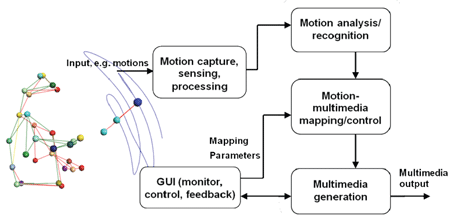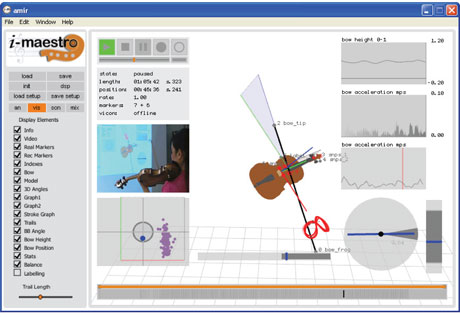Digital media and technology are becoming increasingly important for the performing arts, particularly with regard to technology-enhanced performance. Digital preservation is now an urgent consideration for performing arts in many aspects, such as ensuring possible future re-performance and analysis, and the preservation of intangible heritage (beyond the usual audio-visual recording) and plying/gesture styles.
Digital preservation aims to ensure the intelligibility of digital information at any given time in the near or distant future. Digital preservation must address changes that inevitably occur in hardware or software, in organizational or legal environments, as well as in the designated community, ie the users of the preserved information. In order to be preserved against these changes, digital information must be enriched with metadata or ‘representation information’, which can be used for the interpretation of the original information. In addition, representation information needs to be connected to the knowledge base of the designated community. Ontologies offer a means of organizing and representing the semantics of this knowledge base.
This article presents a brief overview of the contemporary arts testbed of the CASPAR EC IST project, with particular focus on the digital preservation of Interactive Multimedia Performances (IMP). The CASPAR framework is based on the Open Archival Information System (OAIS) reference model, providing a consistent set of concepts, terminology and a framework for the development of archival information systems and related standards.

Figure 1: Main processes of an IMP.
An IMP involves one or more performers who interact with a computer-based multimedia system, making use of multimedia content that may either be pre-prepared or generated in real time, including music, manipulated sound, video and graphics.
The architecture of the proposed archival system allows multiple multimedia systems to be preserved, such as the Music via Motion (MvM) software for transdomain mapping of motion and sound (see Links), the i-Maestro 3D Augmented Mirror (see Figure 2, Links), and many others.
Due to multiple dependencies, the preservation of an IMP requires a robust representation and association with digital resources. This can be achieved with an ontological approach that describes an IMP and its internal relationships to support the preservation process. With the CASPAR framework we use entities and properties defined in the CIDOC-CRM and FRBRoo ontologies for the description of an IMP.

Figure 2: A screen snapshot of the i-Maestro 3D Augmented Mirror (capturing and analysing audio, video, 3D motion data, pressure and balance).
CIDOC-CRM was originally designed to describe cultural heritage collections in museum archives. A harmonization effort has also been carried out to align the Functional Requirements for Bibliographic Records (FRBR) to CIDOC-CRM for describing artistic contents. The result is an object-oriented version of FRBR, named FRBRoo. The concepts and relations of the FRBRoo are directly mapped to CIDOC-CRM.
For the testbed, a Web-based archival system called the ICSRiM IMP Archival System has been developed. It is based on the OAIS model and integrates the CASPAR components by extending their functionality for the efficient preservation of the IMPs. The interface of the prototype communicates with a repository containing both the IMPs and the metadata necessary to preserve the IMPs. Both the ingestion and retrieval procedures are based on the representation information of the IMP. The representation information is generated in RDF/XML format with the use of the CASPAR Cyclops tool (see Links) and captures all the appropriate metadata of the IMP to enhance virtualization and future re-performance of the IMP.
For the ingestion procedure, the archival system parses the representation information of an IMP, detects the defined modules, and then guides the user to ingest the corresponding digital content. After the ingestion of the package, the representation information is updated with information regarding the location of the IMP files.
For retrieval, the system calls the CASPAR FindingAids service, which performs RQL queries on the representation information and returns the related objects to the user.
The captured representation information plays a significant role in providing access to an IMP, as it encapsulates the semantic information needed for the reproduction and comprehension of an IMP. Thus, the user has the ability to retrieve the digital files of an IMP along with comments and additional information on the IMP for re-performance.
The Web-based IMP archival prototype has been successfully validated with a group of IMP producers and artists. It is now being piloted at the University of Leeds Interdisciplinary Centre for Scientific Research in Music (ICSRiM). Further works include setting automated responses to changes that may affect the preserved IMP. For example, upon the release of a new software version, the metadata and information packages should be updated with the new information.
Links:
CASPAR: http://www.casparpreserves.eu
CASPAR Cyclops tool: http://www.utc.fr/caspar/wiki/pmwiki.php?n=Main.Proto
i-Maestro: http://www.i-maestro.org
University of Leeds Interdisciplinary Centre for Scientific Research in Music (ICSRiM):
http://www.icsrim.org.uk, http://www.leeds.ac.uk/icsrim
Music via Motion (MvM): http://www.leeds.ac.uk/icsrim/mvm
Body movement to create music, BBC News, Technology: http://news.bbc.co.uk/1/hi/technology/3873481.stm
3-D movement captured to conduct music, Reporter, issue 500, University of Leeds: http://reporter.leeds.ac.uk/500/s14.htm
Please contact:
Kia Ng
ICSRiM - University of Leeds
Tel: +44 113 3432583
E-mail:










